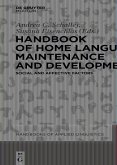An issue facing Samoan families and their children living in New Zealand is the decline of Samoan language (Bell, Stark and Taumoefolau, 2002). Since then a further decline from 48% to 44% is noted particularly in the case of `Pacific Kiwis' or New Zealand born Samoans who can speak Samoan (Collins, 2008). The hypothesis is that one way Samoans use to ensure the maintenance of their language is through the family fono and church fono. The aim of the study is to examine how the Samoan language is maintained by Samoan people in New Zealand. As such, the study is conducted in family environment and church communities where the Sunday school and youth are other smaller fono. Also, to focus on social interactions and to examine the role of these two contexts in the framework of a bigger context that of fono a le nuu as reconfigured or developed in cultural institutions in New Zealand.








